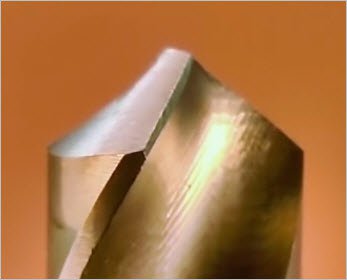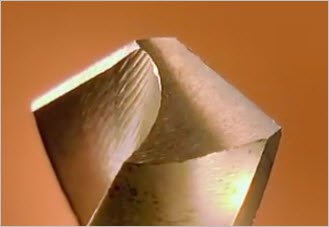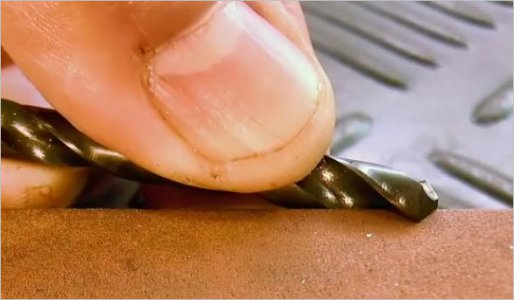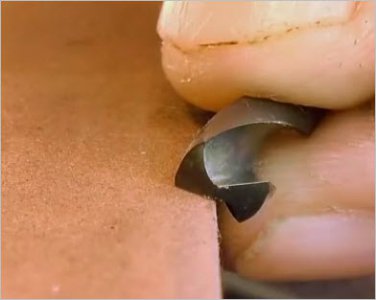I made some bronze bushings from C932 and I don't have a lot of experience with this material. Initial turning was straightforward enough, it came off not as curly swarf but kind of cast iron looking spray of fine shavings with a hard sound. As I progressed up the drill sizes I experienced 'the grab' at ~5/8" diameter which caught be off guard. The preceding hole size was probably trying to warn me of that but I wasn't paying attention. I was using cutting oil & backing out often to clear chips. It took some persuasion to back the drill out manually in reverse. Fortunately that was the last drill size so I could carry on with boring bar which went very well.
The dig in or grab kind of reminded me of brass or sticky aluminum. I wasn't expecting this issue & don't want to again, so want to learn from this experience. I have since re-dressed some drills with appropriate reduced rake angle & set them aside dedicated for brass (and maybe now also bronze use) but haven't tried them yet?
OLM lists these bronze alloys in round. I used C932, aka SAE 660 which they say "comparably easy to machine".
http://www.onlinemetals.com/productguides/bronzeguide.cfm
I've heard similar experience to watch out for 'phosphor bronze'. Of the 3, only the C932 has phosphorus content & its only <0.15% according to specs.
But C655 (silicon) bronze is indicated as "more difficult to machine". I usually take this to mean surface finish as opposed to other problems like auguring in. So is problem more related to C932 being softer than the other bronze alloys & phosphorus just so happens to be a constituent related to this particular alloy & jus gets fingered as the culprit? Strangely, C932 has high lead % which usually makes for a good 'free machining' constituent.
Any tips appreciated.
btw - I need to go back & check my boring bar insert. It might be neutral or even negative rake but don't hold me to it. It was a sharp one & cut/inished beautifully, no issues there. If so, does that indicate that 'brass drills' would be appropriate for bronze?
material references
C932 http://www.matweb.com/search/DataSheet.aspx?MatGUID=b673f55f412f40ae9ee03e9986747016
C954 http://www.matweb.com/search/DataSheet.aspx?MatGUID=b950d0d72b5b467689f2d9c5d9030ae8
C655 http://www.matweb.com/search/DataSheet.aspx?MatGUID=97fc9cb4ed1f45319793fb018b38e645
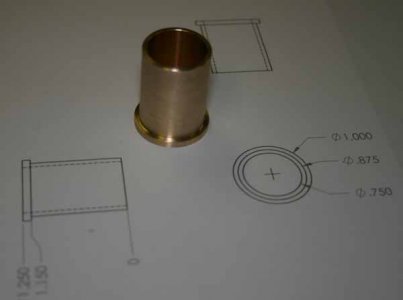
The dig in or grab kind of reminded me of brass or sticky aluminum. I wasn't expecting this issue & don't want to again, so want to learn from this experience. I have since re-dressed some drills with appropriate reduced rake angle & set them aside dedicated for brass (and maybe now also bronze use) but haven't tried them yet?
OLM lists these bronze alloys in round. I used C932, aka SAE 660 which they say "comparably easy to machine".
http://www.onlinemetals.com/productguides/bronzeguide.cfm
I've heard similar experience to watch out for 'phosphor bronze'. Of the 3, only the C932 has phosphorus content & its only <0.15% according to specs.
But C655 (silicon) bronze is indicated as "more difficult to machine". I usually take this to mean surface finish as opposed to other problems like auguring in. So is problem more related to C932 being softer than the other bronze alloys & phosphorus just so happens to be a constituent related to this particular alloy & jus gets fingered as the culprit? Strangely, C932 has high lead % which usually makes for a good 'free machining' constituent.
Any tips appreciated.
btw - I need to go back & check my boring bar insert. It might be neutral or even negative rake but don't hold me to it. It was a sharp one & cut/inished beautifully, no issues there. If so, does that indicate that 'brass drills' would be appropriate for bronze?
material references
C932 http://www.matweb.com/search/DataSheet.aspx?MatGUID=b673f55f412f40ae9ee03e9986747016
C954 http://www.matweb.com/search/DataSheet.aspx?MatGUID=b950d0d72b5b467689f2d9c5d9030ae8
C655 http://www.matweb.com/search/DataSheet.aspx?MatGUID=97fc9cb4ed1f45319793fb018b38e645



